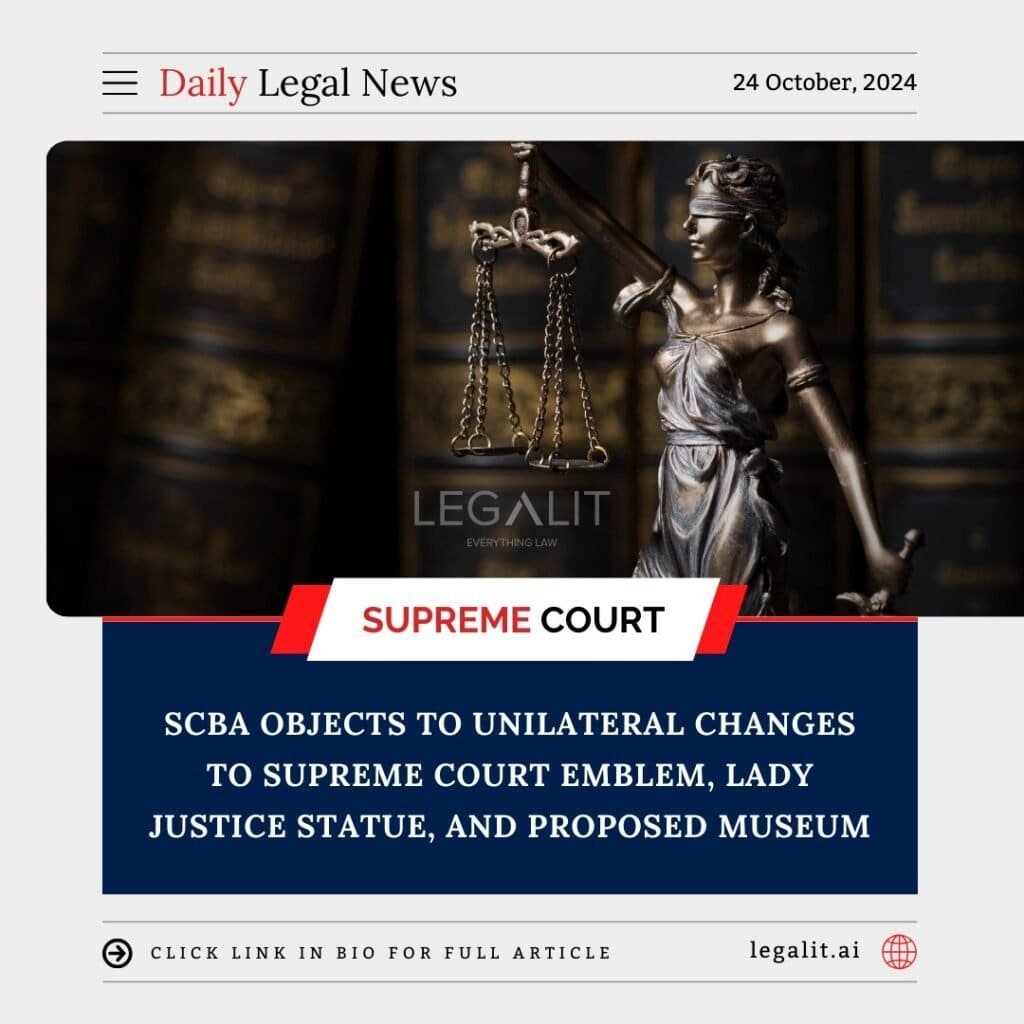
The Supreme Court Bar Association (SCBA) has raised objections to the unilateral modifications made to the Supreme Court’s emblem and the Lady Justice statue, as well as concerns about the proposed museum plans. These objections highlight the tension between the SCBA and the court’s administrative body over decisions impacting the court’s visual symbols and heritage.
Background:
The SCBA has expressed concern about the lack of consultation with stakeholders, including legal professionals, before implementing these changes. It argues that any alteration to such significant symbols, which hold deep historical and legal value, must involve broader discussions to ensure that they reflect the sentiments of all parties involved, particularly the legal fraternity.
Specific Objections:
- Supreme Court Emblem: The SCBA feels that any modification to the official emblem, which serves as a symbol of justice, must be undertaken with due process and consultation.
- Lady Justice Statue: Changes to the statue of Lady Justice, often depicted blindfolded and holding scales, symbolize impartiality and fairness. The SCBA believes that alterations to this statue could affect the perception of these foundational values of the judiciary.
- Proposed Museum: There is also discontent regarding the proposed Supreme Court museum, which the SCBA argues should appropriately represent the judiciary’s heritage, requiring inputs from all stakeholders.
Implications:
The SCBA’s stance reflects a broader concern about preserving the integrity of judicial symbols and maintaining inclusive decision-making processes in matters that affect the identity of the institution. This issue underscores the need for open dialogue between the court administration and the bar to uphold the judiciary’s esteemed image.
Conclusion:
The SCBA’s objections to the changes in the Supreme Court’s emblem and Lady Justice statue bring into focus the importance of preserving judicial traditions while ensuring that reforms are carried out through collaborative processes.